Oenpelli Art
Oenpelli Art Bark Paintings
The Majority of Oenpelli Art is bark paintings. Traditionally the art of this area was painted on rock shelters and on the bark panels of temporary shelters. Arnhem Land Rock Art goes back at least 20,000 years and x-ray style Oenpelli Art at least 8000 years. It is this form of Aboriginal Art that truly is the longest ongoing art tradition in the world.
Oenpelli is the name of a mission, based in Gunbalanya near the Alligator River. It was established by the Church Missionary Society in 1925 at the site of the Government run Oenpelli Aboriginal Reserve.
The mission encouraged Gaagadju artist to paint and and make handicrafts and many of the early works from this area still have mission labels recording the artist and the story depicted.
I am a keen collector of Oenpelli Bark paintings and if you have one and would like to know what it is worth please send me an image.
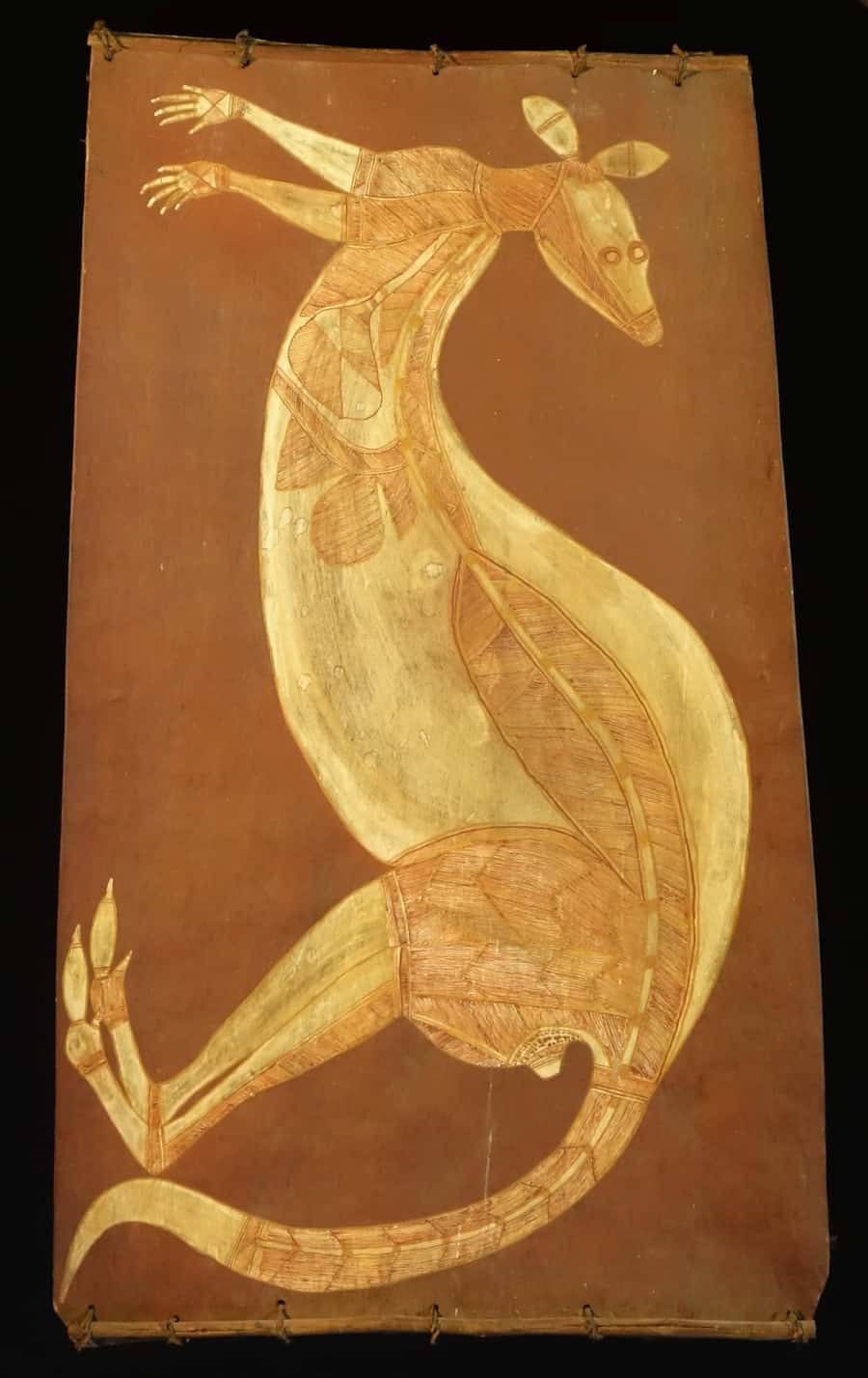
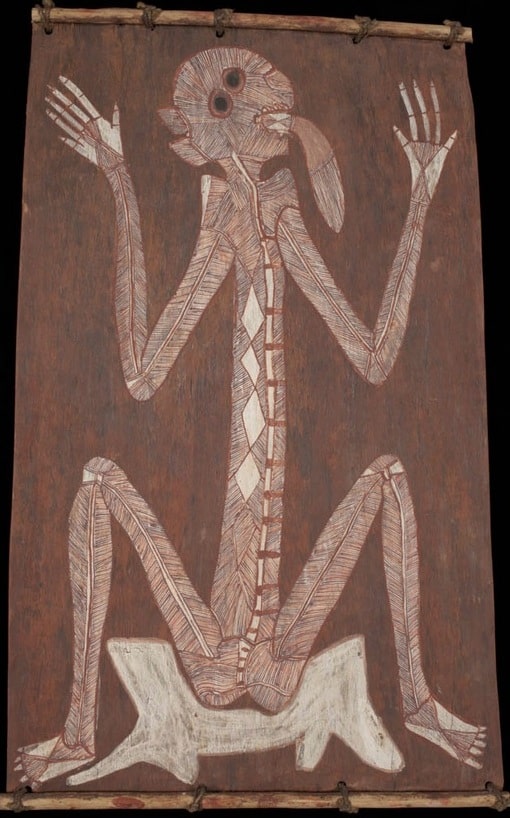
Oenpelli Art Style
Traditional Oenpelli Bark paintings have a monochrome background. After the bark has been stripped from the tree and staraightened over a fire it is painted a single colour. The image or images are then painted leaving a single colour background. The insides of the animals were often depicted leading some people to refer to the art style as X-Ray art.
The reason the details of the internal anatomy is depicted is to bring the totemic animal to life. Traditionally these were more than just images of animals they were related to a deeper traditional spiritual connection to ancestral dreamings.
Oenpelli Art does not just include real animals but also includes creatures from the ancient past like the Raibow Serpent and Mimih spirits.
Some artists also painted scenes of Customary practises and initiation ceremonies.
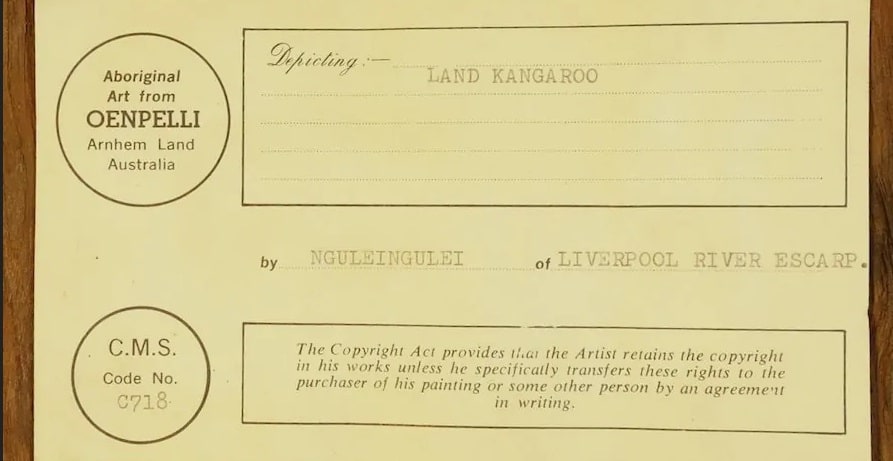
Oenpelli Paintings collection history
The first major collection of Oenpelli Bark paintings was made in 1912 by Baldwin Spencer. In his role as director of the National Museum of Victoria, Baldwin Spencer asked Paddy Cahill to commission several bark paintings from Gaagadju (Oenpelli) artists. In all, about 170 paintings were commissioned in this way between 1912 and 1922.
The early bark paintings prior to the 1960’s were often on rough-cut sheets of bark and unsupported by framework.
In the 1960’s because barks bend, artists often used to drill the top and bottom of the barks so that firm sticks could be attached. These firm stick frames ensured that the bark would not curl as it dried out and these later barks tend to be rectangular.
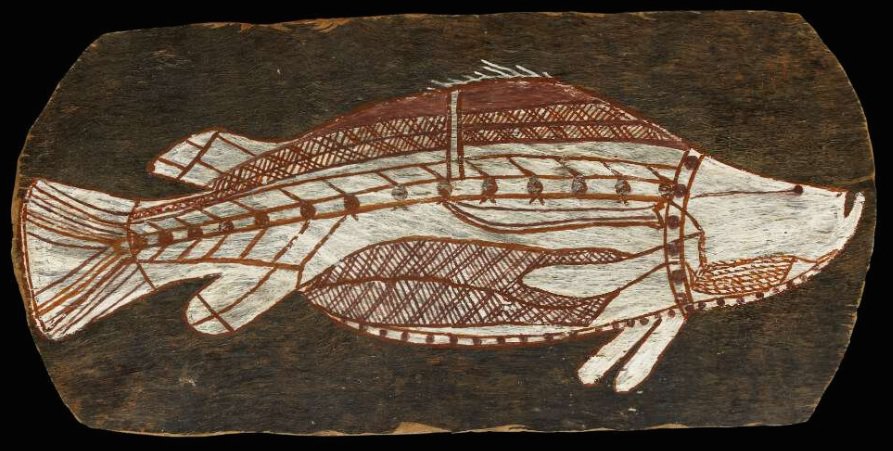
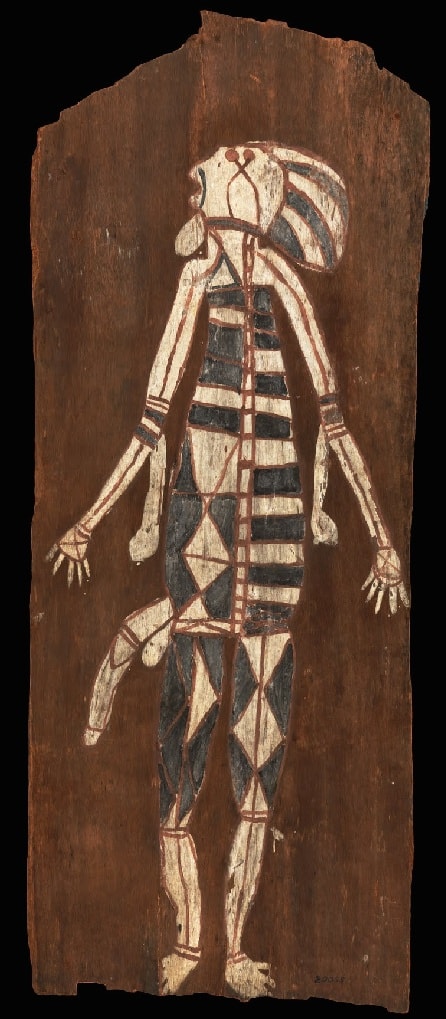
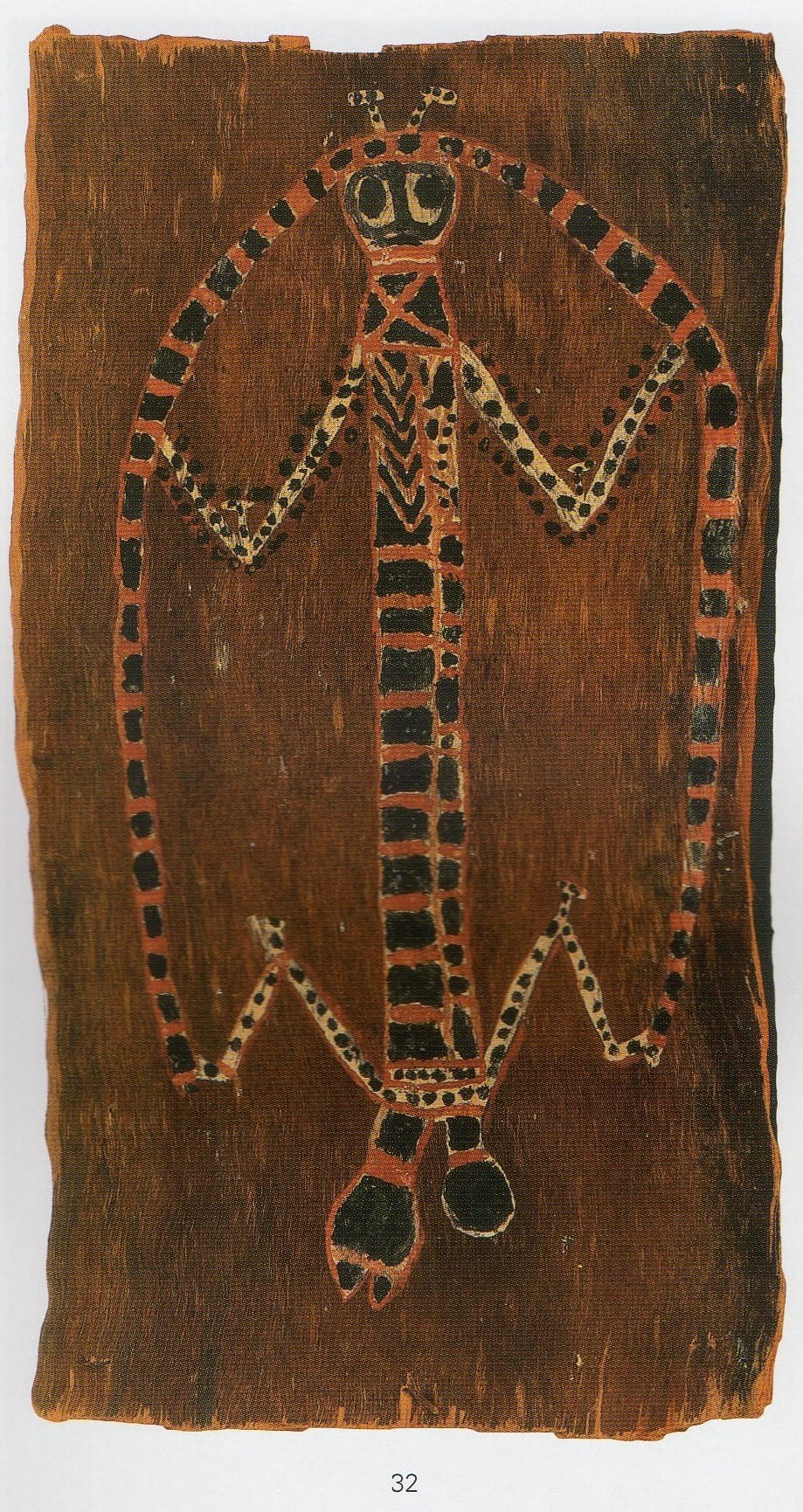
Oenpelli bark painting meanings
The imagery painted on bark by Oenpelli artists is related to dreamings or song lines. Even a picture of a Barramundi is not just a Barramundi but refers to a particular traditional legend story of significance to the artist. Some of these stories like the Namarrkon lightning spirit (opposite) are easier to understand if you know the story.
Crocker Island Art
The Art of Crocker island is by the same people as Oenpelli Art but the style although similar is looser. The art from Crocker Island is some of the rawest and most fluid depictions of spirits found anywhere on earth.
Many of the bark paintings from Crocker island have a simplicity and yet still carry a huge sense of spiritual importance that makes art great.
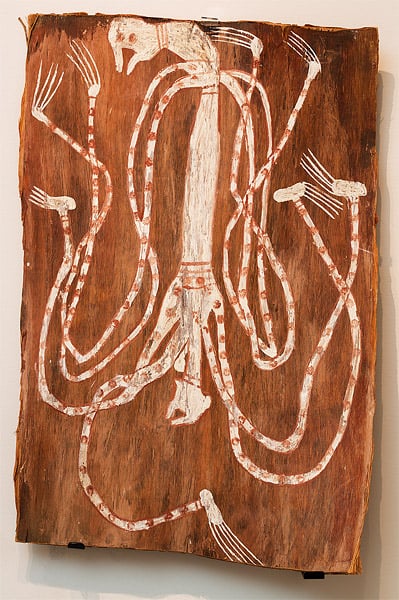
Gaagadju (Oenpelli) Artists
Yirawala
Yirawala is one of the most important Aboriginal artists in Australian Art History. He was an innovator who took his oenpelli roots and combined them with different styles of Arnhem land art. The combination of styles resulted in some exceptional artworks that had clear single images combined with fantastic crosshatching.
He was an authority on traditional tribal beliefs which allowed him to paint many of the beings of the Kuninjku people.
He was a prolific artist and is very collectable.
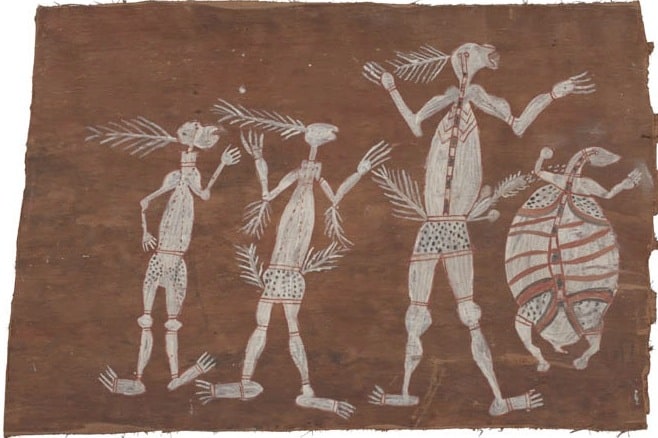
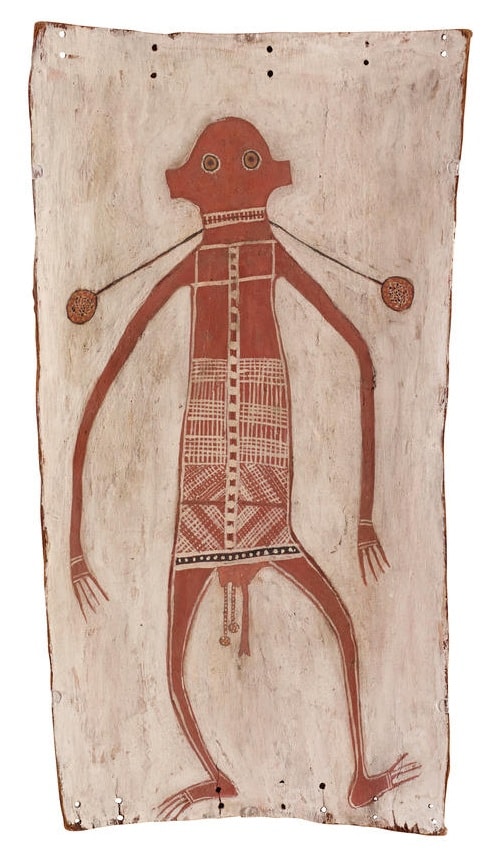
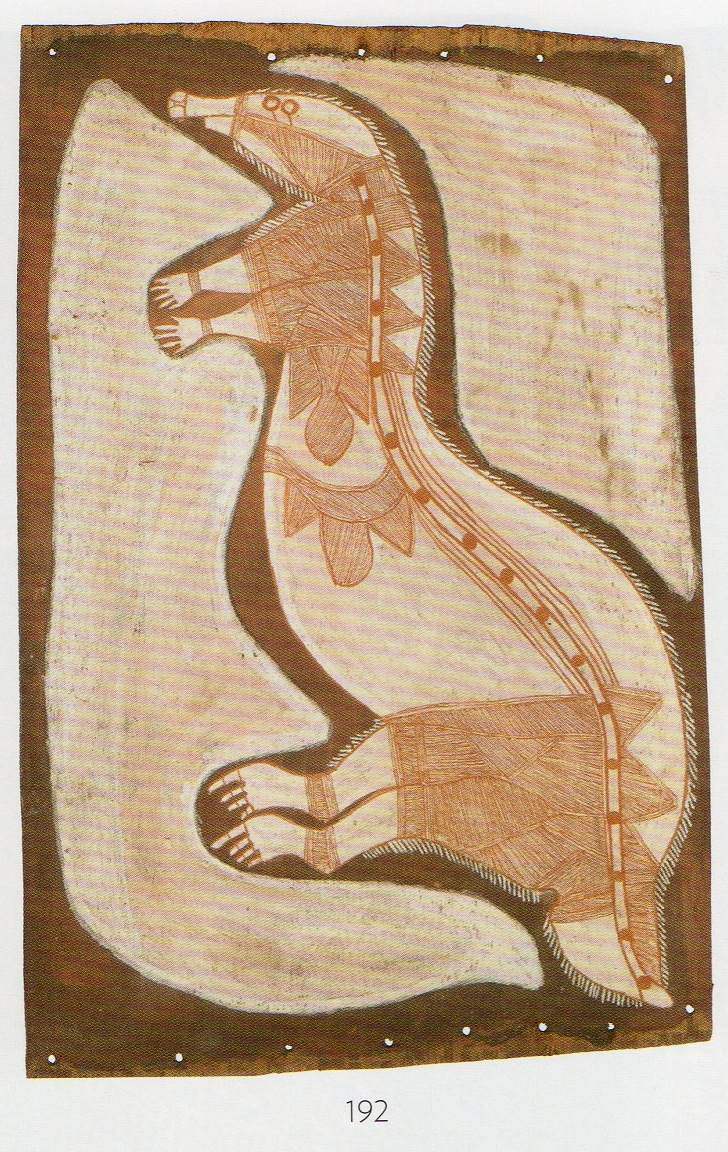
Lofty Nadjamerrek
Lofty Nadjamerrek was one of the best and most prolific Aboriginal bark painters from Oenpelli in Western Arnhem Land. He stuck true to his cave painting background and painted in a traditional X-ray style.
The high quality, intensity, and fineness of his parallel line hatching often distinguish Lofty’s work. He painted on Rectangular bark with either a red or Black background. Lofty Nadjamerrek does not use crosshatching an preferred fine parallel line work.
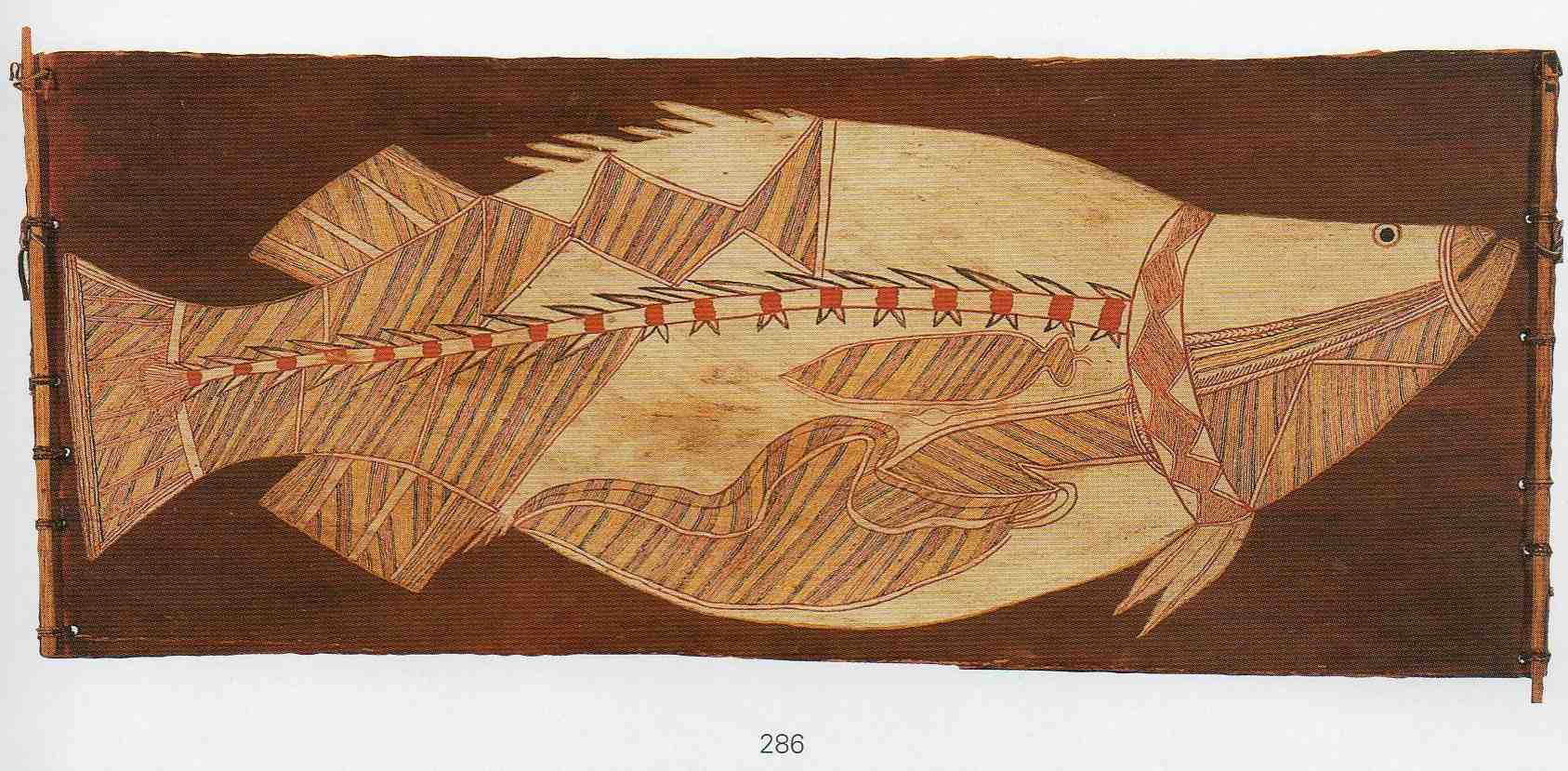
All images in this article are most importantly for educational purposes only.
This site may contain copyrighted material the use of which was not specified by the copyright owner.
